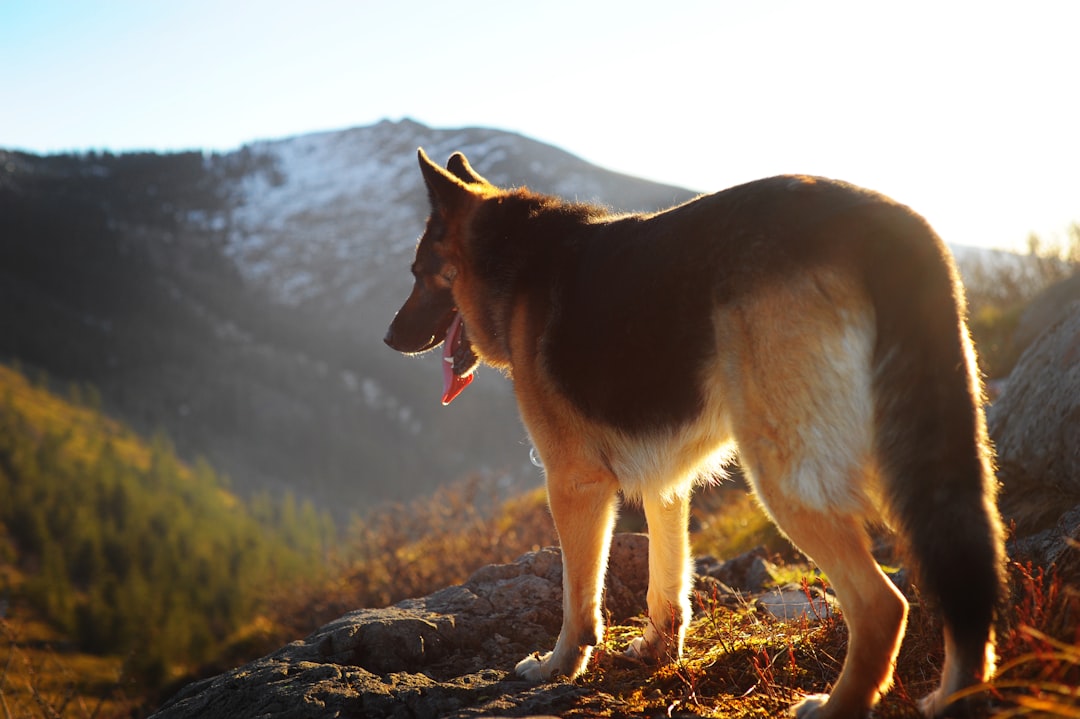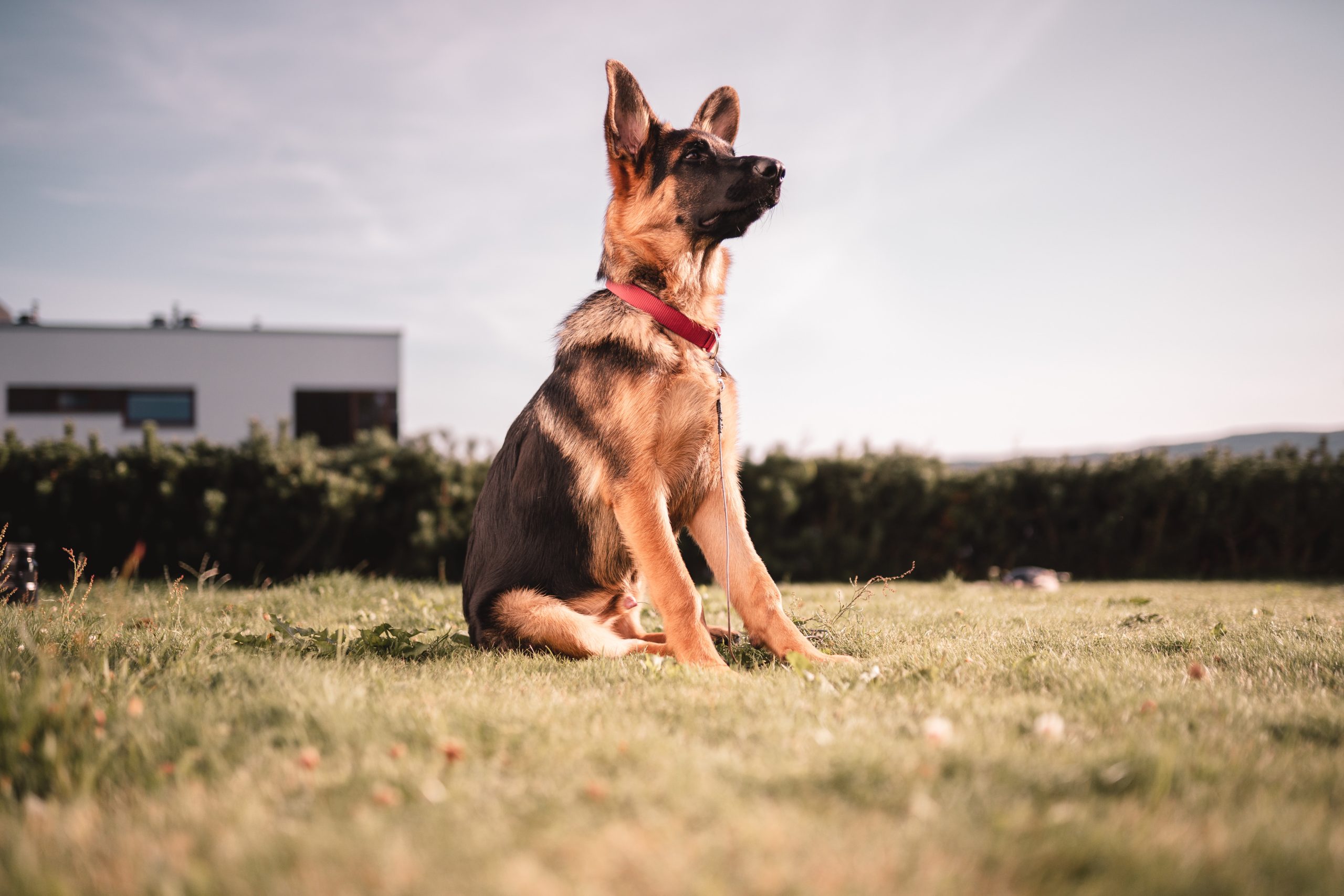The Evolution of German Shepherd Breed Standards: From Conformation to Recognition
German Shepherd Breed Standards and Recognitions: An in-depth look at the historical development of the German Shepherd breed, changes in breed standards, essential physical features and temperament traits, affiliations with kennel clubs, the impact of conformation changes, and the importance of responsible ownership and breeding practices.

German Shepherd Breed Overview
The German Shepherd dog, initially developed by Max von Stephanitz in the late 19th century, is recognized for its remarkable combination of intelligence, strength, and loyalty. It is widely acknowledged for its versatility and has been employed in various roles, including search and rescue, police and military work, and as a devoted family companion. These roles require a dog with a well-balanced, muscular physique, and a confident yet approachable demeanor. The breed’s physical attributes, such as its medium size, erect ears, and two coat types, contribute to its adaptability and suitability for a range of tasks, reflecting its strong working ability and athleticism [3].
The German Shepherd’s distinctive medium size, typically ranging from 22 to 26 inches in height, and its strong, straight, and relatively short back, are essential physical features that enable the breed to move with efficiency and agility. Additionally, the German Shepherd’s well-defined and proportional head, complete with a long, strong muzzle and a complete set of evenly spaced, white teeth, enhances its ability to carry out its duties effectively. These physical characteristics, combined with a confident yet aloof temperament, make the German Shepherd Dog a highly sought-after breed for a variety of working and companion roles, as its traits align with the breed standards developed to emphasize its functionality and purpose.
 Evolution of German Shepherd Breed Standards
Evolution of German Shepherd Breed Standards
The evolution of German Shepherd breed standards over the last 50 years has been marked by a significant shift in focus towards working ability, athleticism, health, and temperament. This shift has been instrumental in shaping the conformation standards to prioritize the breed’s overall functionality. For example, there has been a notable emphasis on breeding for soundness of movement and an agile, athletic build to ensure that German Shepherds are capable of performing their traditional roles as herders, guardians, and search and rescue dogs with efficiency and grace.
Furthermore, the transition from a sloped back to a more level topline is a clear illustration of this evolution. This change reflects a conscious effort to prioritize the breed’s well-being and functionality over a particular aesthetic. As a result, German Shepherds are now being bred with a focus on maintaining a strong, level topline that supports their physical prowess and enhances their ability to carry out their duties effectively.
These changes have not only influenced the physical appearance of the breed but have also contributed to a more robust and versatile German Shepherd. The breed’s evolution in conformation standards aligns with the core purpose of the German Shepherd as a working dog, ensuring that its physical attributes and temperament are optimized for its historical and contemporary roles. This evolution underscores the importance of adapting breed standards to meet the practical needs of the German Shepherd as a working and athletic breed, ultimately contributing to the preservation of its heritage and functionality.
 Breed Standards for the German Shepherd
Breed Standards for the German Shepherd
The breed standards for the German Shepherd according to the American Kennel Club (AKC) highlight the specific physical characteristics and temperament traits that define this remarkable breed. The AKC’s standards emphasize the German Shepherd’s role as a loyal, confident, courageous, and steady companion. Furthermore, the AKC standards outline the desirable height ranges for male and female German Shepherds, which are 24 to 26 inches for males and 22 to 24 inches for females at maturity. These standards also address the essential features of correct gait, where absolute soundness of movement is paramount. Moreover, the AKC provides detailed information about disqualifications and eliminating faults in the German Shepherd breed standards, such as missing teeth or lack of confidence, which are considered eliminating faults, and disqualifications like albinism, undershot, wry mouth, and cropped ears.
Over the years, the AKC has been instrumental in maintaining and refining the breed standards for the German Shepherd, ensuring that the breed’s integrity and unique characteristics are preserved. This has led to a comprehensive understanding of the breed’s ideal physical attributes and temperament traits, which have become the cornerstone of the German Shepherd’s breed standards. By adhering to these standards, responsible dog owners and breeders can contribute to the overall health and well-being of the German Shepherd breed, ensuring that it continues to thrive as a beloved and iconic dog breed. Through the AKC’s dedication to promoting responsible dog ownership and breed standards, the German Shepherd has garnered widespread recognition and respect as a versatile, loyal, and noble breed.
Recognitions and Affiliations
The German Shepherd breed has garnered recognition and affiliations with several esteemed kennel clubs, fortifying its esteemed position in the canine world. One notable affiliation is with the American Kennel Club (AKC), a highly regarded organization that provides valuable resources on various aspects of dog care, including breed information, health, and training. The AKC’s involvement in advocating for responsible dog ownership and advancing dog sports has significantly contributed to the promotion and preservation of the German Shepherd breed’s standards and qualities.
Moreover, the breed is also affiliated with the United Kennel Club (UKC), which plays a pivotal role in upholding and promoting breed standards. The UKC’s recognition of the German Shepherd breed further solidifies its standing within the international canine community, emphasizing the breed’s remarkable characteristics and temperament traits. These affiliations with prominent kennel clubs not only validate the breed’s conformation and working abilities but also ensure that breeders and enthusiasts adhere to established standards, contributing to the breed’s overall health and functionality.
Impact of Conformation Changes
The transition in conformation standards for the German Shepherd breed has been a pivotal factor in shaping the overall functionality and health of these remarkable dogs. Over the past 50 years, there has been a notable shift from a sloped back to a more level topline, emphasizing the breed’s well-being and working ability. This conformation change has had a profound impact on the breed’s athleticism, agility, and overall soundness, ensuring that the German Shepherd remains a versatile and reliable working companion.
For instance, the emphasis on a more level topline has positively influenced the breed’s gait and movement, promoting a more natural and effortless stride. This has not only enhanced the dog’s physical grace but has also contributed to reducing the risk of musculoskeletal issues, ultimately improving the German Shepherd’s overall well-being. Additionally, the conformation changes have played a crucial role in maintaining the breed’s capabilities for various tasks, such as herding, search and rescue, and police work, highlighting the breed’s adaptability and working prowess.
Furthermore, these conformation standards have also impacted the breed’s health by reducing the occurrence of certain orthopedic concerns that were associated with the previously popular sloped back conformation. This shift aligns with the collective effort to prioritize the well-being of German Shepherds and underscores the commitment to breeding dogs that are not only visually striking but also physically robust and resilient. The evolution of these standards illustrates a dedication to preserving the breed’s heritage while safeguarding its future, ensuring that German Shepherds continue to excel as exceptional companions and working dogs.
Responsible Ownership and Breeding Practices
Adhering to breed standards and recognitions is crucial for maintaining the unique characteristics and well-being of the German Shepherd breed. The breed standards set by kennel clubs such as the AKC provide a blueprint for the ideal physical attributes, temperament traits, and overall functionality of the German Shepherd. By adhering to these standards, breeders and owners can ensure that the breed’s distinct qualities are preserved for future generations. For example, the AKC emphasizes the breed’s attributes such as loyalty, confidence, courage, and steadiness, which are crucial to the breed’s identity and purpose.
Responsible ownership also plays a vital role in the breed’s preservation. This involves providing proper care, training, and socialization to German Shepherds to ensure their well-being and good behavior. Additionally, responsible ownership includes health screenings, regular veterinary care, and appropriate nutrition to maintain the breed’s overall health. By upholding these standards and practices, owners and breeders contribute to the longevity and vitality of the German Shepherd breed, allowing it to thrive for years to come.
Frequently Asked Questions (FAQs)
- What are the breed standards for the German Shepherd according to the AKC? The AKC provides detailed breed standards for the German Shepherd, emphasizing the essential physical features and temperament traits that define the breed. These standards address various aspects, including desirable height ranges, gait, and coat types.
- How have the conformation standards for German Shepherds evolved over the past 50 years? Over the last 50 years, there has been a significant evolution in the conformation standards for German Shepherds, with a shift towards working ability, athleticism, health, and temperament, and a transition from a sloped back to a more level topline.
- What are the physical characteristics and temperament traits emphasized in the German Shepherd breed standards? The breed standards emphasize the physical attributes and temperament traits that define the German Shepherd, including its confidence, fearlessness, and desirable height ranges for males and females.
- Who is credited with developing the German Shepherd Dog, and what are its key physical attributes? The German Shepherd dog was developed by Max von Stephanitz and is known for being a medium-sized, well-balanced, and muscular breed with distinctive physical attributes such as erect ears, a low-set natural tail, and two coat types.
- What are the desirable height ranges for male and female German Shepherds according to breed standards? According to breed standards, the desirable height at maturity for male German Shepherds is 24 to 26 inches, and for females, it is 22 to 24 inches.
- What are the essential features of correct gait in the German Shepherd Dog? Correct gait is an essential feature of the German Shepherd Dog, with absolute soundness of movement being paramount for the breed.
- What are the disqualifications and eliminating faults in the German Shepherd breed standards? The breed standards outline various disqualifications and eliminating faults, such as missing teeth and lack of confidence, which impact the eligibility of German Shepherds in conformation competitions.
- How has the German Shepherd’s physical conformation changed with a shift from a sloped back to a more level topline? The shift from a sloped back to a more level topline reflects a focus on the breed’s well-being and working ability, contributing to enhanced athleticism and overall soundness.
- What are the recognitions and affiliations of the German Shepherd breed in various kennel clubs? The German Shepherd breed is affiliated with various kennel clubs, including the AKC and the UKC, which play a crucial role in maintaining breed standards and providing recognition for the breed.
- How has the emphasis on working ability and athleticism impacted the German Shepherd breed? The emphasis on working ability and athleticism has significantly impacted the breed’s overall functionality, agility, and soundness, ensuring that the German Shepherd remains a versatile and reliable working companion.


